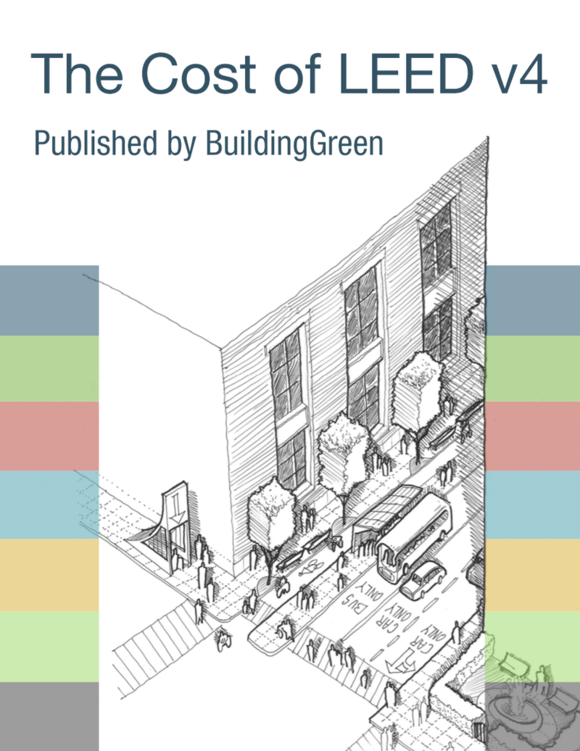Credit language
Requirements
Option 1. Walk-off Mats (0.5 point)
At each primary entryway from the outdoors, design and install a permanent walk-off mat that is at least 4 feet (1.2 meters) long and allows access for cleaning (e.g., grating with catch basin). Permanent walk-off mats are required only for primary exterior entryways, but nonpermanent walk-off mats are strongly recommended for other entryways.
For regularly used common exterior entryways in multifamily buildings, install permanent systems that are at least 10 feet long (3 meters) in the primary direction of travel to capture dirt and particulates.
Acceptable entryway systems include permanently installed grates, grilles, and slotted surfaces that allow for cleaning underneath. Roll-out mats are acceptable only if maintained on a weekly basis by a contracted service organization.
AND/OR
Option 2. Shoe Removal and Storage (0.5 point)
Design a shoe removal and storage space near the primary entryway, separated from living areas. This space must be a permanent architectural feature and it must be large enough to accommodate a bench and at least two pairs of shoes per bedroom and must not have conventional carpet. Carpet tile is acceptable if it’s specifically designed for entryway systems or similar use, including performance attributes equivalent to other acceptable entryway systems.
For multifamily buildings, design a shoe removal and storage space at each residential unit’s primary entrance.
AND/OR
Option 3. Preoccupancy Flush (0.5 points)
At installation, seal all permanent ducts and vents to minimize contamination from construction. Remove seals after all phases of construction are completed.
After construction ends and before occupancy, flush the home with fresh air, according to the following guidelines:
- Remove any dust and debris from ducts.
- Flush the entire home for 48 hours, keeping all windows and interior doors open; the 48 hours may be nonconsecutive if necessary.
- Keep all windows open and run a fan (e.g., HVAC system fan) continuously, or flush the home with all HVAC fans and exhaust fans operating continuously at the highest flow rate.
For multifamily buildings, the requirements apply only to all in-unit spaces.
Projects that earn the EPA Indoor airPLUS label automatically meet the requirements of Option 3.
AND/OR
Option 4. Air Testing (1 point)
After construction ends and before occupancy, but under ventilation conditions typical for occupancy, conduct baseline indoor air quality testing using protocols consistent with the methods listed in Table 1. Project teams must follow either the current versions of ASTM standard methods, EPA compendium methods, or ISO methods, as indicated. Laboratories that conduct the tests for chemical analysis of formaldehyde and volatile organic compounds must be accredited under ISO/IEC 17025 for the test methods they use.
Demonstrate that contaminants do not exceed concentration levels listed in Table 1.
Table 1. Maximum concentration levels, by contaminant and testing method
click the link to view full table
Conduct all measurements before occupancy but during normal occupied hours, with the building ventilation system started at the normal daily start time and operated at the minimum outside air flow rate for the occupied mode throughout the test.
The number of sampling locations depends on the size of the building and number of ventilation systems but must include the entire building and all representative situations. Include areas with the least ventilation and greatest presumed source strength.
Collect air samples between 3 and 6 feet (900 and 1 800 millimeters) from the floor to represent the breathing zone of occupants over a minimum four-hour period.
Measure particulate concentrations by a gravimetric method. Hand-held or real-time instruments are not acceptable unless they are calibrated on site against the standard gravimetric method.
For each sampling point where the concentration exceeds the limit, take corrective action and retest for the noncompliant contaminants at the same sampling points. Repeat until all requirements are met.
Refer to CA Section 01350, Appendix B, New Single-Family Residence Scenario, for air-testing guidance.
See all forum discussions about this credit »


